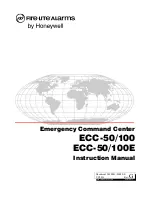
Applications Guide
Networking
A-10
Strata CIX Programming Vol.1 12/09
Traveling Class Mark
Calling privileges, restrictions and priorities may be imposed across Strata Net using the Traveling Class
Mark. The Traveling Class Mark accompanies all calls across the network. When the call reaches its
terminating node, that node uses the Traveling Class Mark to determine whether the originator of the call is
entitled to the dialed facility. The mark is a single information element linked from the following:
•
Network Class of Service
•
Network DR Level
•
Network Facility Restriction Level
•
Network Queuing Priority Level
All nodes contain tables to translate between local and network DR Levels, Facility Restriction Levels and
Queuing Priority Levels. DRL, FRL and QPL each require two tables: one to translate from the local level
to the network level for outgoing calls and one to translate from network to local level for incoming calls.
Network Class of Service is an exception for two reasons. First, at the originating node, each station is
assigned a Network Class of Service; there is no translation. The terminating node does contain a table to
translate the received Network Class of Service to a local Class of Service but it adds parameters to the
local Class of Service before determining how to process the call. Those parameters are:
•
Permission for Off-Hook Call Announce
•
Ability to register System Speed Dial numbers in the terminating node
•
Ability to register Class of Service Override in the terminating node and
•
Trunk Group Override Access
Time of day considerations are handled at the originating node. If a call originates in a node that is in night
mode and terminates in another node, it will deliver the night mode values regardless of the condition of
the terminating node.
Path Replacement
Known also as Route Optimization and Release Link, Path Replacement makes the most efficient use of
talk paths between network nodes. For example, if a series of transfers around the network results in a
conversation between two stations in the same node, all of the tie line circuits are released and a simple
station-to-station call is established in the one node. This efficiency reduces the number of facilities to be
provided and improves transmission quality by minimizing the number of links over which loss could occur.
Path Replacement applies to:
•
Call Transfer
•
Ring Transfer
•
Station Call Forward
•
System Call Forward
Coordinated Numbering Plan
A Coordinated Numbering Plan rationalizes the dialing patterns required of network users and relieves
them of the need to know complicated access codes to navigate the network. The basic mechanism is the
Network Directory Number described above. The combination of node ID and Directory Number appear to
the user as simple extension dialing. The ability to overlap the two components reduces the number of
dialed digits. If it is necessary to preserve legacy extension ranges at individual nodes, a Network Access
Code can be used to resolve numbering conflicts with other nodes.
Summary of Contents for CIX 200
Page 42: ...Network eManager 2 4 Strata CIX Programming Vol 1 12 09 ...
Page 43: ...Network eManager Strata CIX Programming Vol 1 12 09 2 5 Network eManager ...
Page 44: ...Network eManager 2 6 Strata CIX Programming Vol 1 12 09 ...
Page 314: ...This page is intentionally left blank ...
Page 432: ...This page is intentionally left blank ...
Page 434: ...This page is intentionally left blank ...
















































